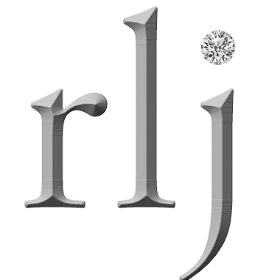Round Brilliant Cut: A History of the Classic Diamond Cut

Choosing a truly timeless diamond ring you can wear forever is simple, if you’re familiar with the round brilliant. This elegant, fashionable and majestic diamond jewelry cut is deceptively unassuming, but once you discover the fascinating history of this beloved gem, you’ll see it’s the perfect representative for lasting true love.
In the Beginning
Hailing from an established family of diamond cutters, Marcel Tolkowsky — an engineer — developed what is known as the “American Standard” in 1919, when he published a paper on the proper dimensions of this divine cut. Though proportions have altered some in the ensuing years, it’s nearly identical to the cut you see decorating the fingers of modern adherents like Natalie Portman and Kate Hudson.
Facets, Reflections and Diamond Design
What makes this seemingly plain shape so captivating? It’s all about the facets. The round brilliant offers exceptional symmetry in its proportions; this helps create a dazzling spray of color when light hits it. Typically, this style has 58 facets and each one is carefully placed, producing the kind of breathtaking reflections that force you to cry and shout, “Yes!” in a public space.
An important consideration for you to remember, diamond cutters may design a stone with a longer pavilion — the length and depth of the cone — and narrower table — the flat top of the diamond — in order to create a different effect. While limited variations are acceptable, keep an eye out for unscrupulous jewelers who are compensating for flaws or weaknesses.
With their light-catching sparkles, eye-popping prices and escalating value, few objects elicit the kind of passionate response that diamonds do. The round brilliant, with its refined shape, brilliant reflections and time-tested popularity, offers you an unimpeachably beautiful choice that will last as long as your love.
How it Stacks Up
Unlike their older counterparts, modern round brilliant diamonds have a tightly woven pattern of light and dark flashes. Older cuts can appear “chunkier” thanks to a larger face up pattern. Much like our discussion of cushion cut diamonds.
Many older round brilliants were cut between the 1870s and the 1940s. Because some served as transitions between older and more-modern styles, they aren’t as consistent, and there’s greater variety between each diamond from this era. So while in theory an antique diamond cut circa 1914 looks more similar to one cut in 1920 (rather than 2014) there still might be a big difference in the way they look.
After the recession drove the price of precious metals – especially gold – through the roof, more antique jewelry pieces were sold as scrap than ever before. While it’s sad to think that these antiques are now gone, the diamonds saved from those pieces take on a new life in modern settings. So the influx of antique diamonds on the market is refreshing to customers looking for something different, or simply to marry the old with the new.


Comments are closed.